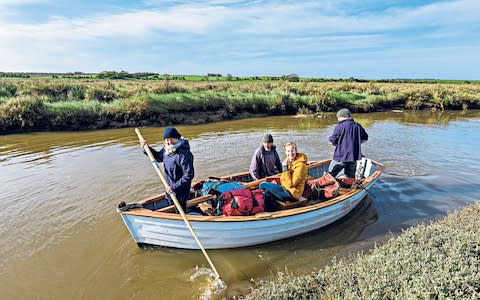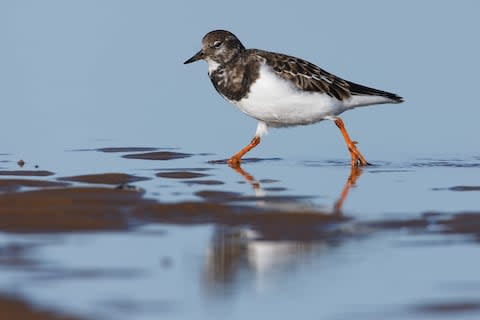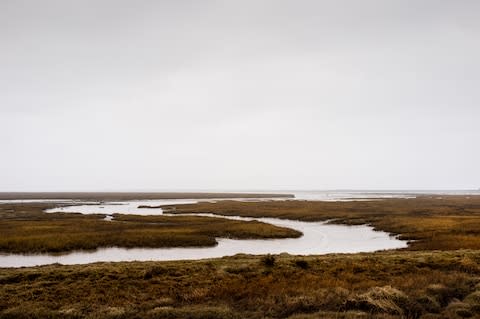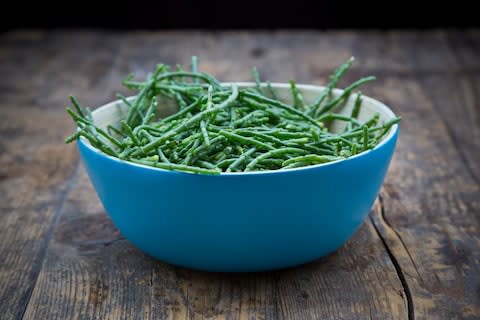Escaping the modern world on Norfolk's serene but untamed coast

It was the oystercatchers that gave the game away, tapping at the sand with their long orange bills. We wandered over and unearthed their seashore feast. Cockles, mussels, winkles, whelks... shellfish as far as the eye could see. Foraging bucket sufficiently full, we returned to make lunch on the boat, where the smell of frying onion and garlic was sending my taste buds into overdrive.
My day had started considerably earlier when, bleary-eyed, I’d stood on the slipway in Wells-next-the-Sea, scouring the boats in the harbour for a mussel flat. Actually, who am I kidding? I had absolutely no idea what a mussel flat was. But then I saw someone wave at me from a pale grey, wooden sailing boat and surmised the person to be Henry Chamberlain and the vessel to be a mussel flat.
Henry runs the Coastal Exploration Company, which offers unique seafaring adventures along the North Norfolk coast. The former Marine, who was brought up locally, spends his winters working in Africa, but returns here every summer to take people out into the creeks, salt marshes and open sea around Wells and Blakeney, in one of his three traditional Norfolk fishing boats.

Each trip, from four hours to three days, is bespoke – you choose what you want to do, whether it be foraging, sailing and wild swimming or simply kicking back and connecting with nature.
I’ve joined Henry for a day of adventuring aboard his latest acquisition, Vera, Boris and Keira, a beautifully restored Sixties mussel flat (so authentically renovated, in fact, she has a starring role in the hotly anticipated costume drama The Personal History of David Copperfield, part-filmed in Norfolk and due for release later this year.
The boat – given to Henry by a fifth-generation local fisherman – would once have been used to take mussels from the lays (beds) in the creeks to land. These days, they’ve been replaced by fibreglass models, and the old wooden mussel flats are rare. “I’m only aware of three in the area,” he told me. “Two are wrecks and then there’s this one, which can’t have been out in the creeks for about 50 years.”

Henry’s other vessels – a whelk boat and a crab boat – both have diesel engines, but the mussel flat goes by sail and scull only. However, as we left the bustling harbour behind, there was no need for either; the incoming tide carried us smoothly along the muddy creeks that zigzag the marsh, some so narrow only the mussel flat could access them.
We floated like this for a couple of hours, watching the sun edge its way up into the huge Norfolk sky, punctuated only by the poker-straight lines of Brent geese and a few wispy clouds. All I could hear was the chirpy chirruping of skylarks. The marshes – which in summer are full of sea pinks and sea lavender – are a haven for wildlife with common terns, curlews, egrets, waders (redshank, turnstones and sanderlings, mainly) and even red kites to be spotted.

It’s a bewitching landscape, so I was surprised to hear Henry describe the marshes as “dangerous”. “The coastal area between sea and land can’t be tamed,” he explained. “I like that, as every single time you go out you have to think hard about what you’re doing. Each trip is a mini-adventure to a part of the coast most people can’t access; it’s a chance to get away from the modern world and immerse yourself in the wild.”
We breakfasted alongside the bank. As Henry and his crew – Zoe and Ed (who just happens to be a descendant of Captain Bligh) – prepared fresh coffee, bacon and eggs, all locally sourced, they regaled us with stories of the marshes. How in the 18th-century they were used as farmland, and that the wooden stumps visible along the creeks were remnants of bridges built for the sheep when Wells had a thriving wool trade. And how the town’s once flourishing whelk industry saw the fishermen return from the creeks with their haul and boil them in huge pots in the whelk sheds that line the east quay.

Evidently passionate about this watery wilderness, Henry and his crew were keen to emphasise how non-invasive their trips were on this fragile environment: “Everything we do, we think about the impact,” Henry pointed out, as he fished a discarded plastic bucket out of the water. “We take small numbers of people and we never go too fast, otherwise you create a bow wave, which can destroy the banks. When foraging we only collect a taster, as we’re aware there are limited resources – and we don’t go deep on to the marsh, so as to protect the plants and the birds.”
On we went, this time with some sculling, under an iron bridge and into the wider creeks, where – just before we got out to sea – we dropped anchor. The plan was to wait for the tide to ebb away and the sandbanks to appear through the blue-green water, so we could start to forage.
Again, I was struck by the serenity. Though I saw life in the form of a row of fat grey seals sunbathing in the distance, there wasn’t a human in sight save the crew – not even the bait-diggers, who regularly scour the area for lugworms. Lucky really, as I’d decided to go for a swim, but hadn’t thought through the skinny jeans to wetsuit transition. Ten awkward minutes of wriggling behind a clump of reeds, and I was ready to plunge in.

Wild swimming in the creeks is entirely optional on Henry’s trips – I’m the only one who had a dip on this occasion and even Henry was impressed (did I mention he’s an ex-Marine?). It was delightfully, refreshingly cold and I lasted – ooh – five minutes. Actually, make that three.
Foolhardery over, it was time to warm my cockles, or at least search for some. Which is when – thanks to our feathered friends – we stumbled across the seafood bonanza on the sand. Mindful of foraging with a conscience, we gathered up just a few of the larger cockles, discarding any with broken or open shells.
During the warmer months, the marshes and creeks are a veritable nature’s larder, with not just shellfish but also crabs and mackerel to be caught, and sea purslane, sea aster and plump stalks of bright green samphire to be picked.

Though Henry is happy for you to take any shellfish spoils home, molluscs should be sanitised for 48 hours before being consumed, so he will always bring a “safe” backup to actually eat on the trip. In this case, it was a bag of local mussels, cleaned and ready to be cooked (luckily for us, our excursion was during the mussel season).
We devoured the juicy bivalves, alongside a spread of pork pie, cheeses and thick slices of homemade ginger parkin. Food is a key part of Henry’s trips and, as I munched away, he told me of how he delivers North Norfolk produce by sail to King’s Lynn, Ely and Norwich, with a crew from the homeless charity Purfleet Trust, for whom he hopes the sailing will provide a positive life experience.
Feasting over, we hoisted the russet red sail and headed for home, lungs full of sea air, salty, sun-kissed and feeling totally recharged on nature, just as Henry had promised we would be.
How to do it
A day exploring the creeks (approximately eight hours) aboard the mussel flat costs £480 for exclusive charter for a maximum of four people, including breakfast and lunch. A four-hour circular route aboard the mussel flat costs £295 for exclusive charter for a maximum of four people, including breakfast or lunch. For more information and to book, call 07970 276397 or see coastalexplorationcompany.co.uk.

